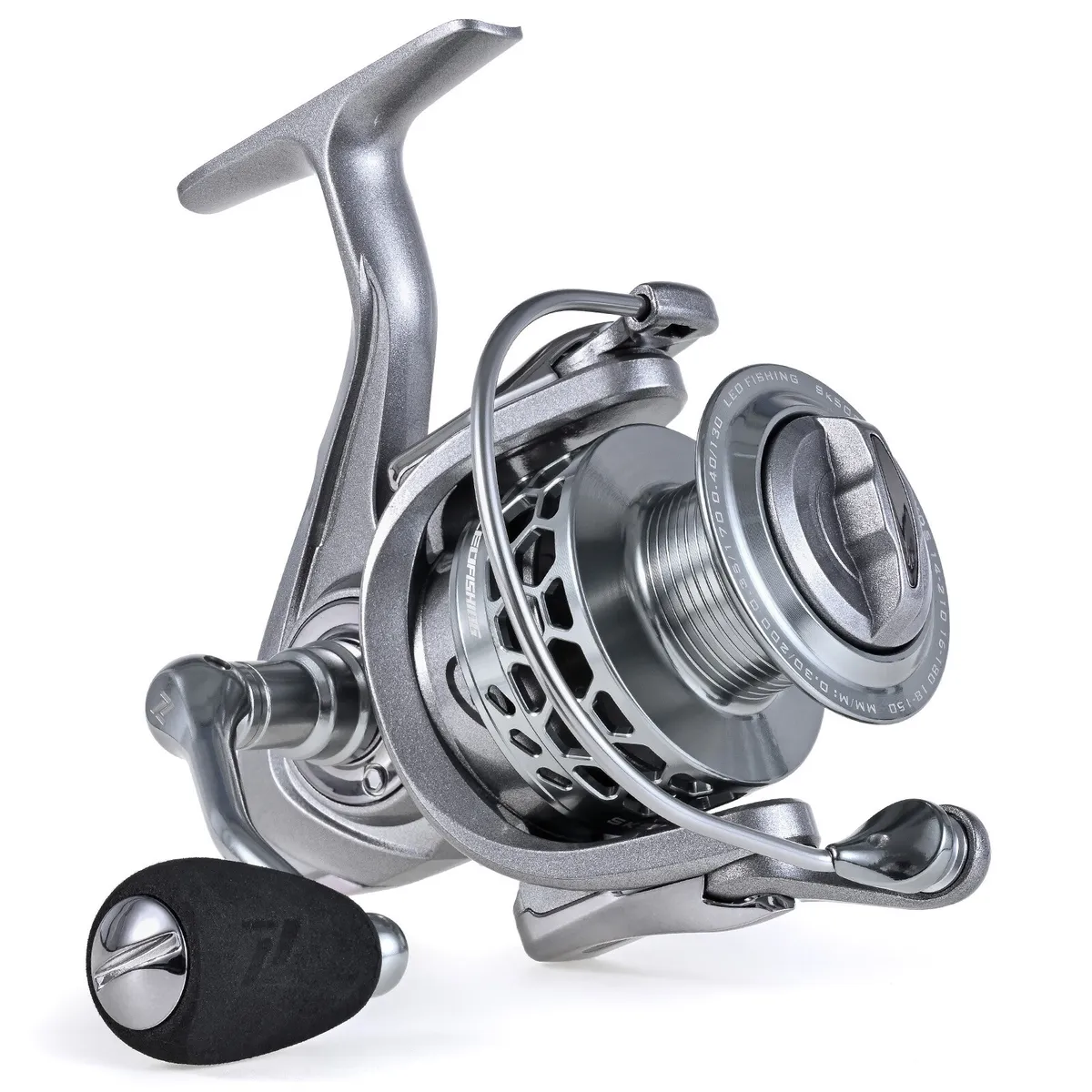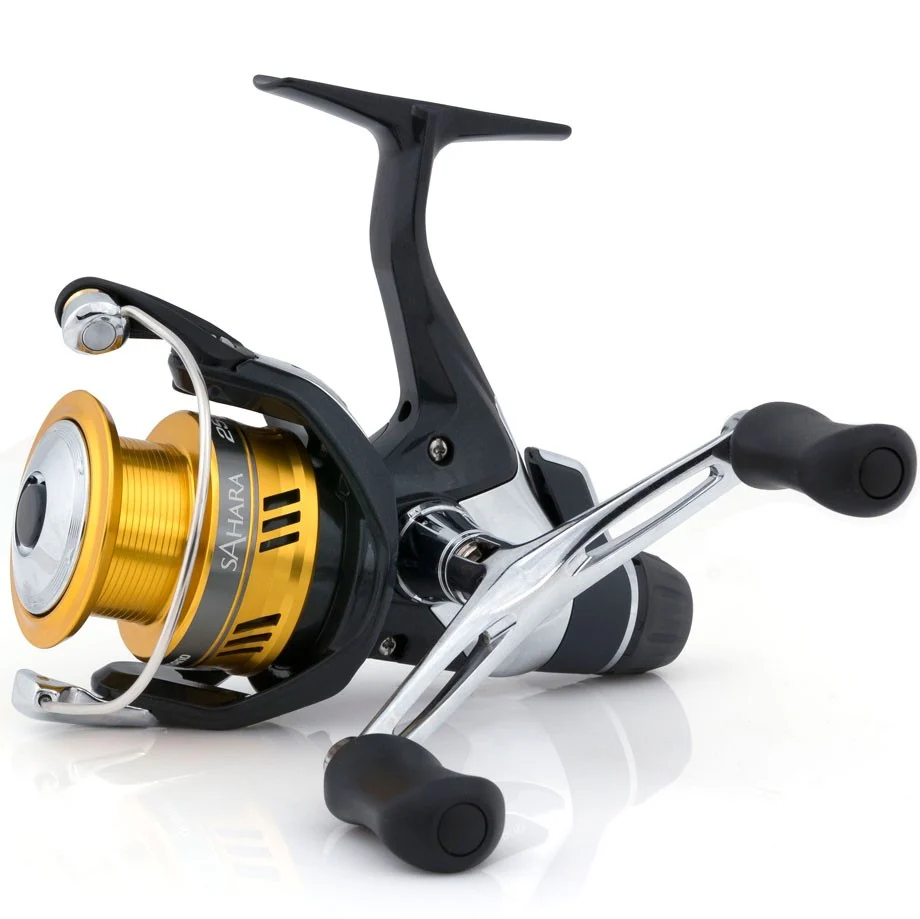For any angler, mastering the art of the catch goes beyond casting a line and reeling in a fish. A crucial element in this equation is the drag system – the silent guardian within your fishing reel. This intricate mechanism plays a vital role in the fight, acting as a controlled release valve that prevents line snaps and allows you to tire out your catch without compromising the integrity of your line.
This comprehensive guide delves into the world of drag systems, specifically focusing on the two prevalent types: front drag and rear drag. By understanding their functionalities, advantages, and ideal applications, you’ll be well-equipped to choose the system that perfectly complements your fishing style and target species.
Unveiling the Drag System: The Guardian of Your Line
Function: Imagine a powerful fish taking a fierce run, pulling with all its might. Without a drag system, your line would simply snap under the immense pressure. The drag system acts as a controlled release valve, applying friction to the spool of your reel and allowing line to be released gradually. This critical mechanism offers several benefits:
- Prevents Line Breakage: By absorbing the initial pull of the fish and releasing line under controlled tension, the drag system protects your line from snapping during a fight.
- Manages Fish Fights: The drag allows you to manage the powerful runs and head shakes of a fish, preventing it from pulling you around uncontrollably. As the fish pulls against the drag, it becomes gradually exhausted, making it easier to reel in.
- Improves Catch Success: A properly set drag system increases your chances of landing that trophy catch by preventing line breaks and allowing you to effectively control the fight.
The Two Titans: Front Drag vs. Rear Drag Systems
Now that you understand the importance of the drag system, let’s explore the two main types found in modern fishing reels:
Front Drag System
Location: The front drag system is positioned at the front of the spool, typically near the handle of the reel. It’s often encased within a knob or lever that allows for adjustments.
Features:
- Larger Drag Washers: Front drag systems generally incorporate larger drag washers compared to rear drag systems. These washers are the heart of the drag, responsible for creating friction and controlling line release. Larger washers translate to increased durability and stopping power, making them ideal for handling heavy loads.
- Precise Drag Control: The design of front drag systems often facilitates more precise adjustments. The larger adjustment knob or lever allows for finer control over the drag pressure, which can be crucial when targeting delicate fish or battling strong currents.
- Heat Dissipation: The larger surface area of the drag washers in front drag systems allows for better heat dissipation. This is an essential feature, especially during extended battles with powerful fish, as heat buildup can affect the drag’s performance.

Pros:
- Durable: Ideal for saltwater fishing and targeting large fish species due to their robust construction.
- High Performance: Delivers exceptional stopping power to handle powerful runs and aggressive bites.
- Precise Control: Offers finer adjustments for optimal control during fights.
Cons:
- Adjustability During Fights: Since the adjustment knob is located at the front of the reel, it can be more challenging to make adjustments while actively fighting a fish.
Best Use Cases:
Front drag systems are the preferred choice for:
- Saltwater Fishing: The harsh saltwater environment and the potential for encountering larger, stronger fish species necessitate the power and durability of a front drag system.
- Big Game Fishing: When targeting trophy fish like tuna, marlin, or giant trevally, the robust drag of a front drag system is essential for successfully landing these giants.
- Techniques Requiring High Drag Pressure: Techniques like jigging or bottom fishing for large fish often require a strong and consistent drag pressure, which front drag systems excel at providing.
Rear Drag System
Location: The rear drag system is situated at the back of the reel, typically near the handle. Similar to the front drag system, it features an adjustment knob or lever for controlling drag pressure.
Features:
- Smaller Drag Washers: Rear drag systems typically utilize smaller drag washers compared to their front-mounted counterparts. While this translates to a less powerful drag overall, it also makes the system:
- Lighter Weight: The smaller drag washers contribute to a lighter overall reel weight, which can be beneficial for techniques requiring long periods of casting or for anglers who prefer a more lightweight setup.
- Easier Accessibility: The rear-mounted location of the adjustment knob makes it easier to reach and adjust the drag during a fight
- User-Friendly Design: The rear drag system’s design often caters to user-friendliness. The readily accessible adjustment knob allows for quick and easy adjustments, making it a good choice for beginners or anglers who prioritize ease of use.

Pros:
- Easy to Adjust: The rear-mounted location makes drag adjustments during a fight more convenient and intuitive.
- User-Friendly: Simple design and readily accessible adjustments ideal for beginners or anglers who prefer a hassle-free system.
- Lightweight: The smaller drag washers contribute to a lighter overall reel weight, enhancing comfort during extended casting sessions.
Cons:
- Less Powerful Drag: Compared to front drag systems, rear drag systems offer a less powerful drag, which may not be suitable for very large fish or saltwater environments.
- Potential for Wear and Tear: Under heavy use with strong fish, the smaller drag washers in rear drag systems may experience faster wear and tear compared to their front-mounted counterparts.
Best Use Cases:
Rear drag systems are well-suited for:
- Freshwater Fishing: For most freshwater species, the drag power of a rear drag system is sufficient for effective fishing.
- Light to Medium Fishing: Techniques like finesse fishing, light lure presentations, or targeting smaller fish species are ideal applications for rear drag systems.
- Spinning Reels: Rear drag systems are the standard design for most spinning reels, which are commonly used for freshwater fishing and light lure presentations.
Choosing the Right Drag System: Aligning with Your Needs
Now that you’ve explored the strengths and weaknesses of both front and rear drag systems, here are some key factors to consider when making your choice:
- Fishing Environment:
- Saltwater vs. Freshwater: Saltwater environments demand a more robust drag system due to the potential for encountering larger, stronger fish and harsher conditions. Front drag systems are generally preferred for saltwater fishing.
- Currents and Tides: Strong currents or tides can put additional strain on your drag. If you frequently fish in such conditions, prioritize a drag system with sufficient stopping power, such as a front drag system.
- Target Species:
- Size and Power: The size and fighting power of your target species play a crucial role. For large, aggressive fish, a front drag system’s robust power is essential. For smaller, freshwater fish, a rear drag system may suffice.
- Ease of Use: Consider your personal preferences. If you prioritize easy access and quick adjustments during a fight, a rear drag system might be more suitable. If raw power and durability are your top concerns, opt for a front drag system.
- Reel Type and Compatibility: Ensure the drag system you choose is compatible with the type of reel you’re using, be it spinning, baitcasting, or another type. Compatibility is crucial for optimal performance and a smooth fishing experience.
- Budget and Brand Preferences: Drag systems vary in quality and price. Set a budget and research trusted brands known for reliable drag systems within your price range. Investing in a quality drag system can significantly enhance your fishing success.

Robert Smith is the proud owner of Bait Barrels and Bows, a premier fishing sports store established in 1989. With over three decades of experience in the industry, Robert has honed his skills to become an expert angler, sharing his vast knowledge and passion for fishing with enthusiasts around the world. Through his store and writings, Robert provides invaluable tips and guidance, helping both novice and seasoned anglers improve their techniques and enjoy the sport to its fullest. His commitment to the fishing community is evident in his dedication to quality products and excellent customer service.

